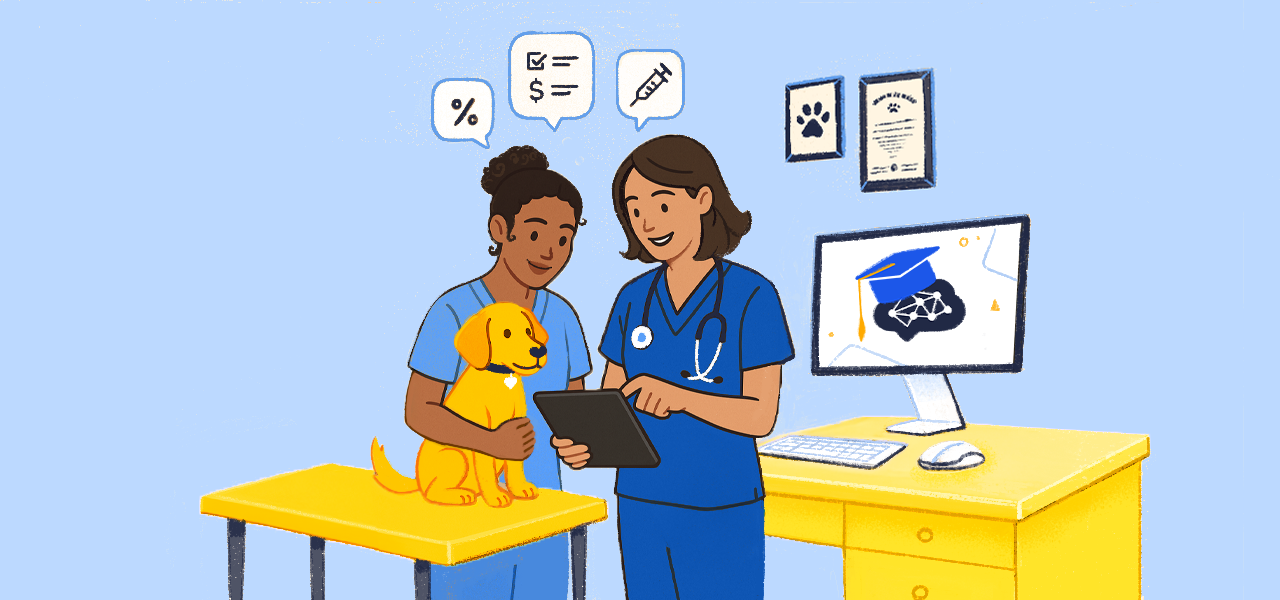Whatever you call it—scratch start, de novo, new build—opening a new veterinary hospital is one of the most exciting (and daunting) things you can do in this profession. You get a clean slate to build something that works for your patients, your team, and your sanity. And most important?
You get to build it right the first time.
Over the years, we’ve worked with dozens of startup hospitals at Instinct—emergency and specialty centers, urgent care clinics, and general practices. We’ve seen what works (and what causes the most headaches) when it comes to setting up a hospital for long-term success.
One thing has become crystal clear: If you’re building from scratch, you’re in a unique position. You’re not burdened by legacy systems or inherited workarounds. You can build a strong foundation by starting with software that'll grow with you, and that your new team will actually love. And that decision shapes everything about how your practice will run.
The Most Overlooked Decision in New Hospital Planning
When you're planning a new veterinary hospital, there's no shortage of decisions to make: real estate, equipment, floor plans, financing, hiring, branding—even the paint colors. And you'll get plenty of advice on all of it. Everyone has opinions.
But there’s one decision that's easy to overlook: Your software.
Your Software Is Your Hospital
Your practice management software isn't just a tool you'll use. It's the system that connects everything from patient care to inventory, labwork, record sharing, payments, team communication… you get the idea.
Your software shapes how your team works, how clients experience your care, and ultimately, how your hospital runs when you're not in the building.
The trouble is, it’s easy to treat software like a detail—something you’ll sort out when the paint’s dry and the team is hired. But by then, you’re already making decisions that your software will either support or complicate: your workflows, your pricing, your staffing model, your hardware.
So here’s our advice: Don’t pick your software last. And don’t treat it like a formality. Treat it like infrastructure—because it is.
What to Look For in Your PIMS
Look for software that does more than just check boxes. Look for a platform that helps you think about:
- How your team will actually work together on a busy day
- How charges get captured (and how much of that is manual effort)
- How easy it is for new hires to get trained
- How rapidly you can get help
- How the software will change as you add staff, services, and even locations
And maybe most important: Look for a partner, not just a vendor. The best software teams will help you think through your setup, not just drop in with logins a week before you open.
How the Most Thoughtful New Hospitals Approach Veterinary Software
The most resilient new veterinary hospitals we’ve seen don’t treat software like just another task to check off before opening day. They treat it like a key part of how the hospital will actually function, and they bring it in early, alongside oxygen lines and exam table decisions.
Here’s how we’ve seen some of the most successful new hospitals approach their software.
Map Real-World Workflows Early
Instead of guessing how things might work once the doors open, these teams sketch out actual patient journeys using their software:
- What happens at check-in
- Where vitals get entered
- How treatments flow from doctor to support staff
- What the discharge process looks like
This approach helps them avoid surprises, reduce rework, and get their team up to speed faster.

Prioritize Tools That People Can Actually Use
You don’t need a system with every bell and whistle. You need one your team won’t dread using. That means a clean interface, thoughtful onboarding, and workflows that feel natural in the middle of a busy shift.
Look for:
- Clear, accessible documentation
- Interfaces that don’t require a deep dive to navigate
- Support that’s responsive and understands the nitty gritty of veterinary medicine
- Built-in patient safety tools, like drug reference access and dosage warnings
- Features that make common tasks faster, not more complicated
Treat Software Like Infrastructure
Your software isn’t a one-time decision—it’s the backbone of your daily operations. It touches every patient, every client, every staff member, and every shift.
When it’s working well, you barely think about it. When it’s not, it’s all you think about.
Obviously, we’re a little biased, but we recommend looking for software that:
- Captures charges automatically as treatments are performed
- Offers a live treatment board showing patient status at a glance
- Supports real-time alerts and internal messaging
- Includes digital forms and e-signatures
- Has a strong track record of uptime—especially nights and weekends
- Can get relief vets and new hires up to speed in under an hour
- Provides built-in reporting that doesn’t require Excel expertise
Get this right, and you won’t be chasing signatures or fixing billing gaps—you’ll be leading your team and practicing medicine the way you intended.
A Few Things to Ask When You’re Evaluating Software
There’s no perfect system in the world of veterinary practice software. But there are some great ones, and asking the right questions helps you spot them:
- How quickly can new staff learn it, and what training do you provide?
- Can I see a real example of a patient workflow from check-in to discharge?
- How often do you release updates, and what’s something meaningful you’ve launched recently?
- What happens if the system goes down on a weekend?
- Who’s building this software, and how are decisions made?
- Can I speak with a practice that used this software when they opened?
The answers to those questions will tell you more than a feature list ever could.

Build for the Medicine You Want to Practice
You’re not just opening a veterinary hospital. You’re creating a space where people will come together to solve problems, care for patients, and do work that matters.
Make sure your software supports that on day one.
If you’re curious how Instinct Treatment Plan or our complete EMR platform could support your practice, reach out and request a demo.


